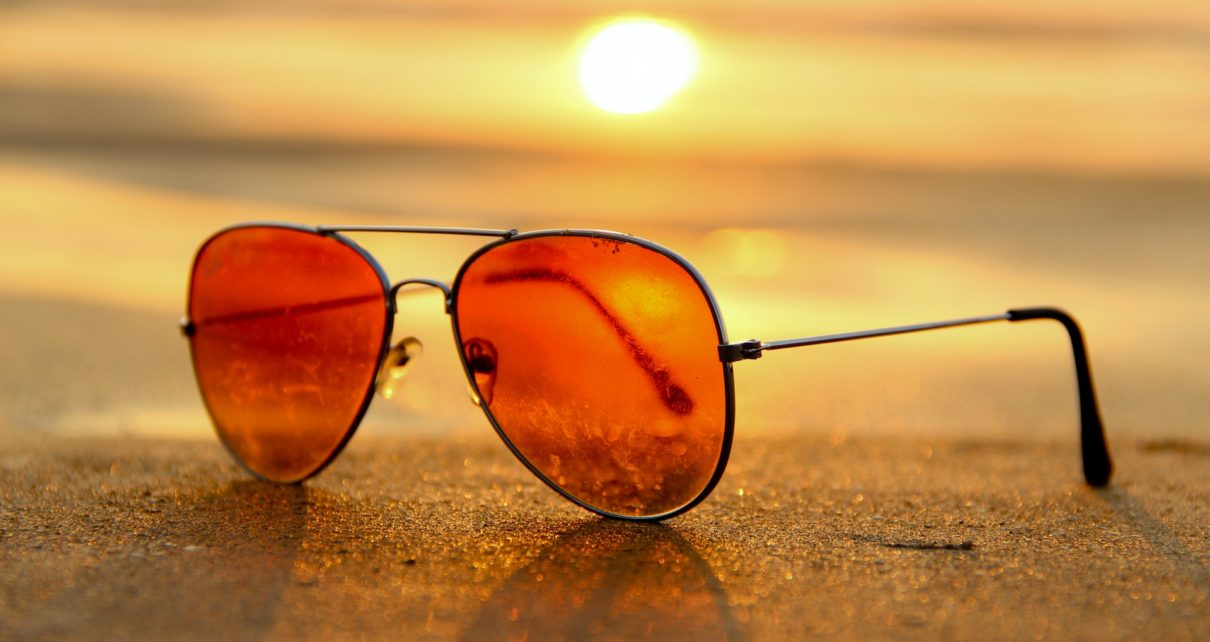Why wear sunglasses? The use of sunglasses is important not so much because they are fashionable, but above all because they are essential protection for our eyes! Exposing our eyes to too strong light, especially ultraviolet rays, can lead to inflammation of the cornea (and therefore even snow ophthalmia) or cataracts. Especially in places with intense light reflections such as eg. in the water, on a white beach or on the snow, the use of glasses is essential to protect our eyes from the effects of ultraviolet rays.
Ultraviolet rays
The light spectrum of visible light extends from blue to red, between 400 and 800 nanometers. Beyond red, infrared rays warm us, while beyond blue, ultraviolet rays put our eyes at risk. Ultraviolet, also called UV, are light rays with a short wavelength, emitted by the sun and partly absorbed by the atmosphere before reaching Earth. UVBs are between 280 and 315 nm, while UVAs are between 315 and 380 nm. In both cases, they are invisible rays but no less dangerous for the eyes. Violet and blue rays are also harmful, which is why blue sun lenses are not recommended.
100% UV protection
A good pair of glasses must protect against UVA and UVB rays. Not only dark lenses are enough, on the contrary, dark glasses without UV protection are harmful, as they involve dilation of the pupil and can thus easily lead to conjunctivitis. A 100% protective filter is no longer a luxury nowadays: even cheap glasses usually have a 100% UV filter. Usually the optician can easily measure the protective filter of your glasses. There are also contact lenses with a 100% UV filter.
Visible light protection
In addition to UV rays, it is also necessary to protect our eyes from visible light. In normal light conditions, lenses with a degree of light absorption of 60 to 80% are sufficient. When our eyes are exposed to intense light conditions, for example when doing sports in the snow or on the water, it is absolutely necessary to wear lenses with 90 to 95% light absorption. But be careful, avoid glasses with a high degree of light absorption when you are driving a car or cycling !! Different sunglasses should be used, suitable for different lighting conditions.
Types of sunglasses
Usually the lenses are made of plastic or tempered glass. To carry out sports activities it is advisable to use plastic lenses, because glass lenses break more easily. Also try not to scratch the lenses, as each scratch requires an adaptation (with consequent fatigue) of the eye. Instead, lenses with a gradual chrome plating (darker in the upper part, lighter in the lower part) are not recommended, as the light does not penetrate only from above, on the contrary, in certain situations, such as on water or snow, the reflected light from below it is particularly intense.
However, eye protection also depends on the type and size of the glasses. Small sunglasses are all the rage, but they’re not necessarily the ones that offer the best protection – the bigger the better! In water or on snow, sunglasses with fins should be used if possible.
Lens quality
The best are ground glass lenses. Fused glass lenses can cause image deformations (point the lens at a distant object and rotate the glasses: in case of deformation, the lens is of poor quality).
Sunglasses for children
Children’s eye protection is especially important! Their ocular tissue is structured in such a way as to allow greater penetration of light and the filtering power is much lower than that of adults. Often the damage done to the eyes of children is revealed only at the age of adults. The skin is unforgiving and neither are the eyes!
Interested in buying sunglasses? Now you can buy prescription sunglasses online!


